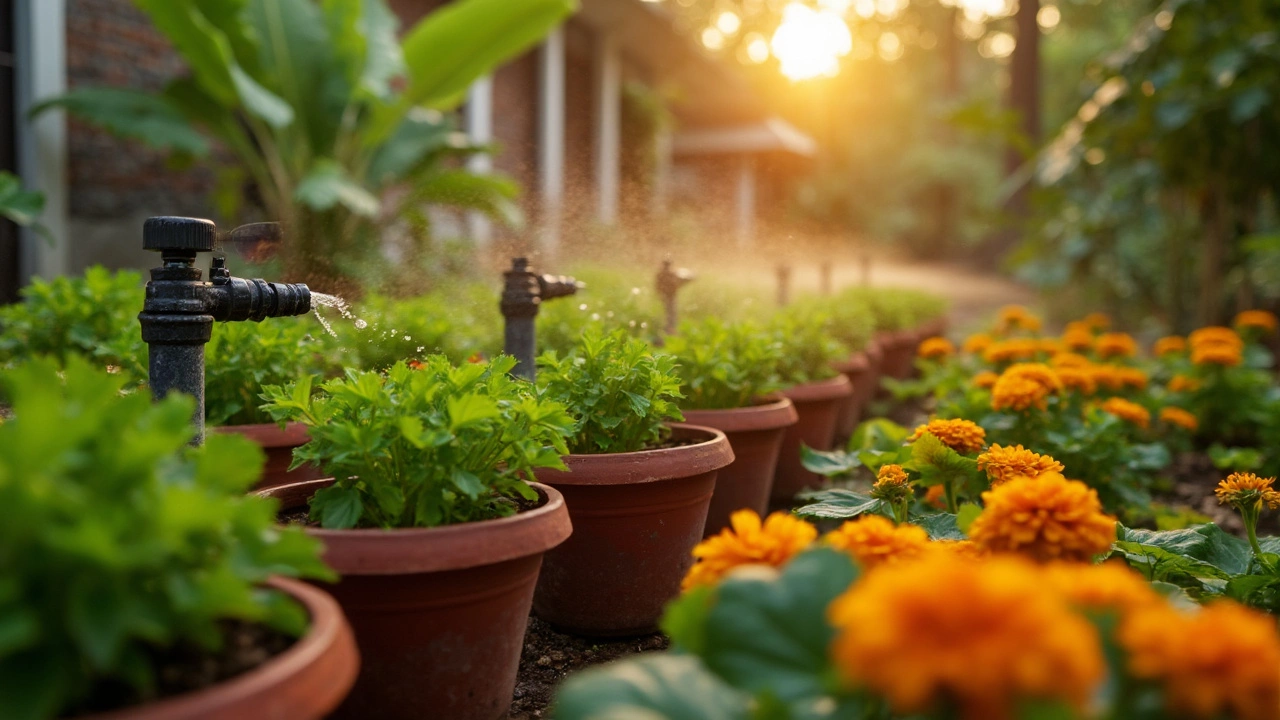Discover the true difference between a dripper and an emitter in garden irrigation. Get practical tips, examples, and surprising facts to help your plants thrive.
Water Efficiency in Indian Gardens: Save Water, Grow More
When it comes to water efficiency, the practice of using the minimum amount of water needed to keep plants healthy and productive. Also known as smart watering, it’s not just about saving money—it’s about surviving in a country where monsoons are unpredictable and groundwater is dropping fast. In India, where millions of small farmers and balcony gardeners rely on manual watering, wasting water isn’t just careless—it’s unsustainable.
True water efficiency, the practice of using the minimum amount of water needed to keep plants healthy and productive. Also known as smart watering, it’s not just about saving money—it’s about surviving in a country where monsoons are unpredictable and groundwater is dropping fast. In India, where millions of small farmers and balcony gardeners rely on manual watering, wasting water isn’t just careless—it’s unsustainable.
It starts with understanding your soil. Dense clay holds water too long; sandy soil drains too fast. Adding compost or leaf mold helps both. Then comes the tool: drip irrigation, a system that delivers water slowly and directly to plant roots through tubes and emitters. Also known as precision watering, it cuts waste by up to 60% compared to hoses or sprinklers. But even the best drip system fails if emitters clog or lines leak—something we’ve seen in dozens of real garden fixes. And it’s not just about equipment. It’s about timing. Watering at dawn, not noon, means less evaporation. Mulching with straw or dry leaves keeps moisture locked in. Even small choices—like choosing drought-tolerant plants like marigolds or curry leaf—add up.
Water efficiency isn’t a fancy technique reserved for big farms. It’s what a grandmother in Tamil Nadu does when she collects rainwater in buckets to water her chili plants. It’s what a college student in Delhi does when she uses leftover rice-washing water for her balcony herbs. It’s what every gardener in India can do—right now—with zero cost and zero complexity.
Below, you’ll find real, tested advice from Indian gardens—how to fix clogged drip lines, how to choose plants that need less water, how to spot overwatering before it kills your roots, and why some pots are worse than others for saving water. These aren’t theories. They’re fixes that worked in actual homes, balconies, and small farms across the country. No fluff. No jargon. Just what helps your plants thrive while using less of the one resource we can’t afford to waste.
